
The COVID-19 Health Equity Task Force was established by Executive Order 13995, Ensuring an Equitable Pandemic Response and Recovery, which was issued on January 21, 2021. Since February, the Task Force has convened every month as part of the government-wide effort to identify and eliminate health and social disparities that result in disproportionately higher rates of exposure, illness, hospitalization and death related to COVID-19.
This month, the Task Force released its deliberation and vote on final recommendations with proposed priorities, suggested outcomes and recommendations to achieve the outcomes. To read more, visit the COVID-19 Health Equity Task Force webpage on the OMH website.
|
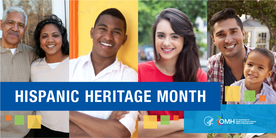
This month the HHS Office of Minority Health (OMH) continues to celebrate Hispanic Heritage Month by disseminating information about disease prevention, health promotion, and sharing the latest recommendations for Hispanics/Latinos related to COVID-19.
The observance theme, Esperanza: A celebration of Hispanic Heritage and Hope, encourages everyone to reflect on all of the contributions Hispanics/Latinos have made in the past and will continue to make in the future in the U.S. It is also a reminder that we are stronger together.
On September 17, HHS Secretary Xavier Becerra released a statement on Hispanic Heritage Month that included a fact sheet in English and Spanish with resources on Hispanic/Latino health disparities, access to care, COVID-19, and much more.
Visit the OMH Hispanic Heritage Month webpage, also available in Spanish, for more information, downloadable materials, and health resources.
|
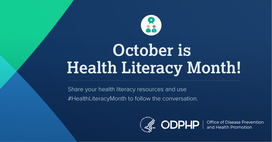
October is Health Literacy Month, a time to recognize the importance of making health information easy to understand and the health care system easier to navigate.
Last year, a team of experts at Healthy People 2030 updated the definition of health literacy by splitting it into two parts:
-
Personal health literacy: The degree to which individuals have the ability to find, understand, and use information and services to inform health-related decisions and actions for themselves and others.
-
Organizational health literacy: The degree to which organizations equitably enable individuals to find, understand, and use information and services to inform health-related decisions and actions for themselves and others.
This new definition acknowledges that organizations have a responsibility to address health literacy and emphasizes the importance of not only understanding health information but using it effectively, too.
Additionally, to fight COVID-19 and help improve health literacy among racial and ethnic minority and vulnerable communities, OMH awarded $250 million in grant awards to 73 local governments this year.
Spread the word about health literacy by taking a look at resources from the Office of Disease Prevention and Health Promotion (ODPHP) — like the National Action Plan to Improve Health Literacy and Health Literacy Online. And be sure to check out the OMH Think Cultural Health website for more information on how to provide effective communication that considers the cultural, health literacy levels, and language needs of the populations you work with.
|
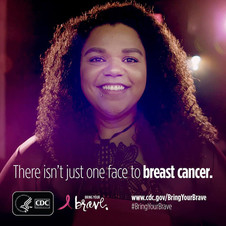
Every October, the nation observes National Breast Cancer Awareness Month. Breast cancer is a disease that affects both women and men and is among the most common types of cancers.
According to the Centers for Disease Control and Prevention (CDC), breast cancer is the second most common cancer among women in the United States after skin cancer. About 1 in 8 women will get breast cancer during her life. Additionally, Black women die from breast cancer at a higher rate than white women.
While there is no way to completely prevent breast cancer, there are ways most women can lower their risk for the disease. Those include:
- Maintaining a healthy weight and exercising regularly.
- Eating a healthy diet.
- Limiting the use of alcohol.
- Breastfeeding, if possible.
OMH encourages regular screenings and check-ups with your primary care doctor; an early diagnosis can help lead to successful treatments. For more information about breast cancer, treatment options available, clinical trials, and research, please visit the CDC's breast cancer webpage.
|
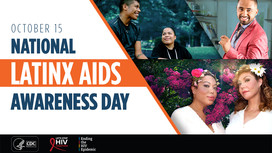
National Latinx AIDS Awareness Day is observed each year on October 15 to increase awareness of the impact of HIV on the Latino population in the United States. The campaign promotes HIV testing and prevention and provides information on access to care for Latino communities across the nation.
According to the CDC:
- In 2018, Latinos accounted for 27 percent of the new HIV diagnoses in the U.S. and dependent areas.
- One in six Latinos with HIV are unaware they have it.
- Latinos have higher rates of some sexually transmitted diseases (STDs) than some other races/ethnicities.
- Poverty, migration patterns, lower educational level, and language barriers may make it harder for some Latinos to get HIV testing and care.
For more information on how HIV is impacting the Latino community, visit our Minority Population Profile and visit HIV.gov's website for resources, graphics, tools, and more.
|
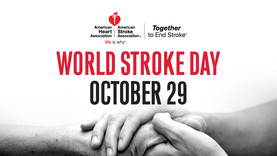
World Stroke Day is held on October 29. This observance day is an opportunity to raise awareness of the serious nature and high rates of stroke, talk about prevention and treatment, and ensure better care and support for survivors.
According to the American Stroke Association, about 1 in 4 people worldwide will have a stroke in his or her lifetime. Black Americans have a higher prevalence of stroke and the highest death rate from stroke than any other racial group.
To prevent stroke, it's vital to understand your risk factors. Some risk factors — such as age, race, gender, and family history — are outside of your control. But you can control other risk factors.
Acting quickly may be the difference between recovery and disability. Use the letters F.A.S.T. — Face Dropping, Arm Weakness, Speech Difficulty, Time to Call — to spot the common signs of stroke and know when to call 911.
Visit the American Stroke Association website for resources, infographics, and more.
|
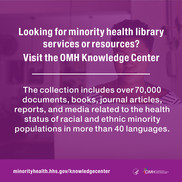
In observance of Hispanic Heritage Month, the OMH Knowledge Center is highlighting publications in the online library collection that analyze overall health disparities existing within the Hispanic/Latino community. To review the most recent resources, search the online catalog here.
|
|